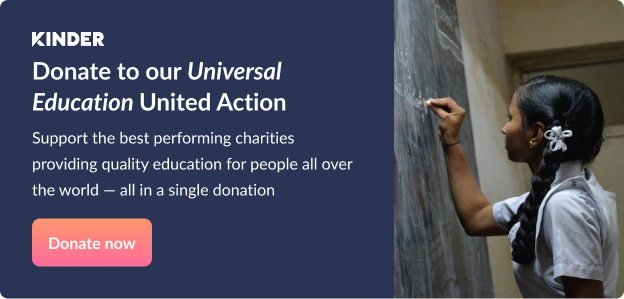You can set up a bank account in just a matter of a few clicks, buy stocks via countless apps, and order a credit card in a few minutes. In the thicket of possibilities, how does a young person make sense of it all?
Most teenagers now consume financial services; more than 50% of 15-year-olds hold a bank account, and even more shop online. Although many of them seem to understand finance to a degree, their knowledge is unevenly spread. Disadvantaged and immigrant children score significantly lower in financial knowledge than children from higher-income households.
This disparity creates social inequality for children early in life — and compounds as they become young adults. Financial literacy, afterall, is considered an essential skill in the modern world.

Financial literacy: Here’s the problem
Financial literacy is the knowledge and understanding of ways to manage your money; concepts like budgeting, income, and debt. The shocking truth is 66% of US adults were considered financially illiterate in 2018. Why does this matter?
4 out of 5 students across the OECD countries said they can decide what to spend their money on without outside help — with 94% of teenagers learning about finance from their parents.
But what if parents aren’t financially literate? This issue can translate to a range of problems and social differences as the children become adults, including struggling to make ends meet, working in the back market, or making disadvantageous financial decisions.
Children get their information about money from other sources too; the internet, teachers, friends, TV shows etc. But the media is also feeding children with the fiction of games, TV shows, movies, and an absolutely massive dose of ads, which can convey unreliable information, leading to confusion or misinformation.
The lack of credible information becomes an issue when lack of knowledge prevents young people from pursuing higher education. The lowest levels of financial literacy is seen in Gen Z, who are only now entering the job market. How many more of them would have entered the workforce — and from which vantage point — if they’d been more aware of their possibilities?

Financial knowledge impacts life choices
I spoke with Carmen, Kinder’s Editor-in-chief, about her experience of teaching children from low-income households in London. Many of her students were surprised to hear they could attend university. They were never told.
While UK universities do charge tuition fees, they also offer a plethora of financial aid options. The majority of students finance their studies with the help of student loans, which are openly accessible to UK residents — and are designed not to put a strain on young people’s finances. Imagine how many more students would attend if they had the right information.
The problem is, the word debt sounds scary. A lot of us were taught by our parents that debt will only lead to catastrophic results. That fear passed on to children prevents them from understanding the difference between good debt (university, a mortgage) and bad debt (shopping sprees on a credit card).
Parents are not to blame — in many cases, they teach caution after experiencing hardship themselves. But lack of financial education may lead young adults to make misinformed choices, or even stop them from taking great opportunities.
Education can lead to an equal start
OECD’s PISA report suggests that the answer is simple: education, education, education. By teaching children about finance, we unlock a world of possibilities. Rolling out widespread educational programmes at schools can close the gap between children from various backgrounds — from childhood and beyond.
Carmen’s experience is proof: good teaching can change lives. Instead of messages like: “Getting a degree is expensive, and “That job is not for the likes of us”, young adults can weigh up their options and make informed financial and professional decisions. University is expensive — and it’s not a prerequisite for a good career — but by having information about all your opportunities, you are more likely to thrive.
After telling them about student loans, Carmen started receiving calls and visits from parents wanting financial advice, which shows that these programmes can have a wider impact on the community; as information and resources are shared.
There is a gap. But there is also a solution. Basic concepts like how to set financial goals, how to budget, and how to negotiate salary, can have a huge impact on money habits. And these habits have a huge impact on social mobility.

The work that needs to be done
Obviously, financial literacy is just one piece of the puzzle in how to decrease the wealth gap. But it is an important one: it can lead to a change that puts young people at the driver’s seat of their lives.
If you feel like you don’t know much about personal finance, there are free online sources available for everyone, including edX, Coursera, Udemy, and others. It might just change your life.
Written by Olivia Chavigny de Lachevrotiere
Would you like to donate to several charities working on access to education — in a single donation? Donate to our Universal Education United Action below and contribute to several solutions at once.





